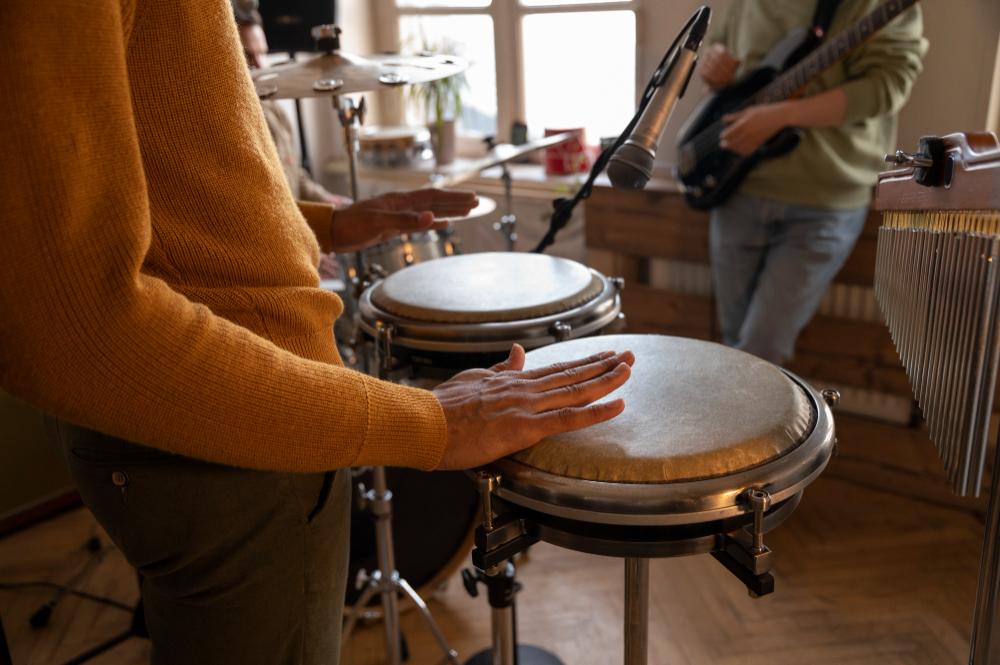Music therapy has long been recognised as an effective form of therapeutic intervention. Among its many instruments, hand percussion stands out for its simplicity and powerful impact on physical and emotional healing. From frame drums to bongos, the act of striking these instruments is not only accessible but deeply connected to human history and emotional expression. Whether you’re a music therapist, a patient, or simply interested in the healing arts, this blog will explore how this music therapy can transform lives.
Healing Power of Hand Percussion in Music Therapy
1. Hand Percussion: Enhancing Cognitive Functions
Studies have shown that playing hand percussion instruments can considerably improve cognitive functions such as memory, attention, and concentration. The rhythmic nature of this music requires coordination and timing, stimulating neural pathways associated with these cognitive processes. This is particularly beneficial in rehabilitation settings, where patients recovering from neurological injuries or disorders can use drumming as a form of cognitive exercise, enhancing their recovery.
2. Stress Relief Through Rhythm
The act of playing hand percussion can be a profound stress reliever. The physical activity of drumming can decrease cortisol, a stress-related hormone, while promoting the production of endorphins, the body’s natural feel-good neurotransmitters. This makes it an excellent tool for managing stress, anxiety, and depression. Engaging in a group drumming session not only helps individual relaxation but also builds a sense of community and support among participants.
3. Physical Rehabilitation and Mobility
Hand percussion plays a crucial role in physical rehabilitation. The motions involved in drumming can improve muscle control, coordination, and strength. For individuals with mobility issues, including stroke survivors and those with Parkinson’s disease, its activities can facilitate motor skills improvement and promote the re-establishment of muscular and neural connections necessary for movement.
4. Emotional Expression and Healing
For many, music is a gateway to expressing feelings that might be difficult to articulate through words. Hand percussion offers a non-verbal outlet for emotions, functioning as a therapeutic form of self-expression and communication. It facilitates a deeper connection to one’s emotional state and can be particularly beneficial in therapy settings dealing with trauma, grief, or emotional disorders.
Conclusion
The healing power of hand percussion in music therapy is vast and multifaceted. It bridges gaps in conventional therapy forms, offering cognitive, emotional, and physical benefits. Whether through enhancing brain function, alleviating stress, aiding physical rehabilitation, or providing a means for emotional expression, this music is indeed a powerful ally in the quest for health and happiness. Encouraging more music therapists to incorporate this tool into their practices could revolutionize therapeutic outcomes for countless individuals.

